Quick Links Block
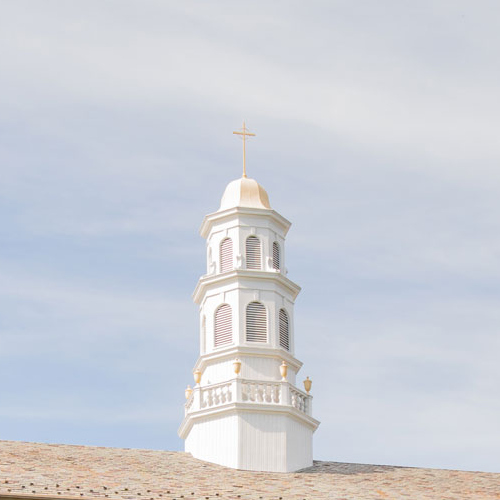
The Quick Links block is a re-usable block of links that can be pulled into pages throughout the website.
A block is a special type of asset that does not include design or formatting, it is only information. It is formatted when it is pulled into a page (the page formats and styles the information). Also, blocks are not published. Their information is visible on the Molloy University website when pages into which they are pulled are published.
The block holds up to five (5) links under a common heading, with each link including:
- Link Text
- Link URL
IMPORTANT: The heading is part of the block and cannot be changed on a block-by-block basis. The heading reads Quick Links.
Pages into which the Quick Links block can be pulled
The Quick Links block can be pulled into the following page types:
- Program Detail
- Standard Level
Where the Quick Links blocks are stored in the site tree
The Contacts blocks are stored in the _quick-link-blocks folder in the site tree. The CMS supports placing the blocks in any folder in the site tree. However, placing them within a single location makes management of the blocks easier, makes them easy to find and use for all CMS users, and helps to prevent having multiple blocks with the same information.

How to create a new Quick Links block
Quick Links blocks are created using the same procedure as creating other types of content (folders, pages, files, etc.).
First, select the _quick-links-blocks folder in the site tree.
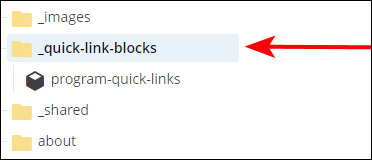
Then click Add Content in the CMS main navigation bar and select the Quick Links asset factory.
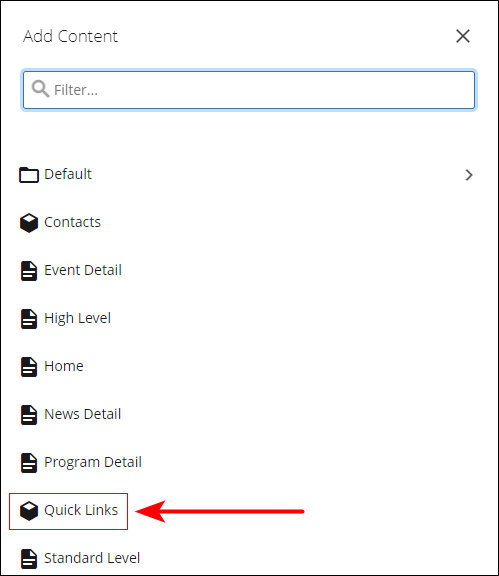
The content entry panel for the new Quick Links block opens. Since blocks are not accessed directly by website visitors (visitors see the information in the blocks when the blocks are pulled into website pages) the name of a block does not need to adhere to the naming rules that pages, folders, and files need to adhere to. So, the name can include capital letters, spaces, etc. However, it is recommended that the same naming convention is used to maintain consistency within the site tree.
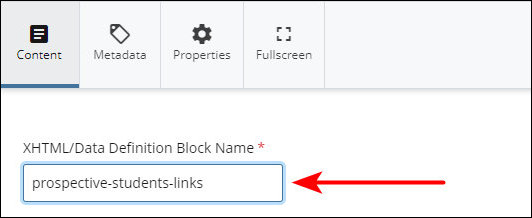
The Quick Links block initially includes one set of Link fields. Enter the content of the first link into these fields.
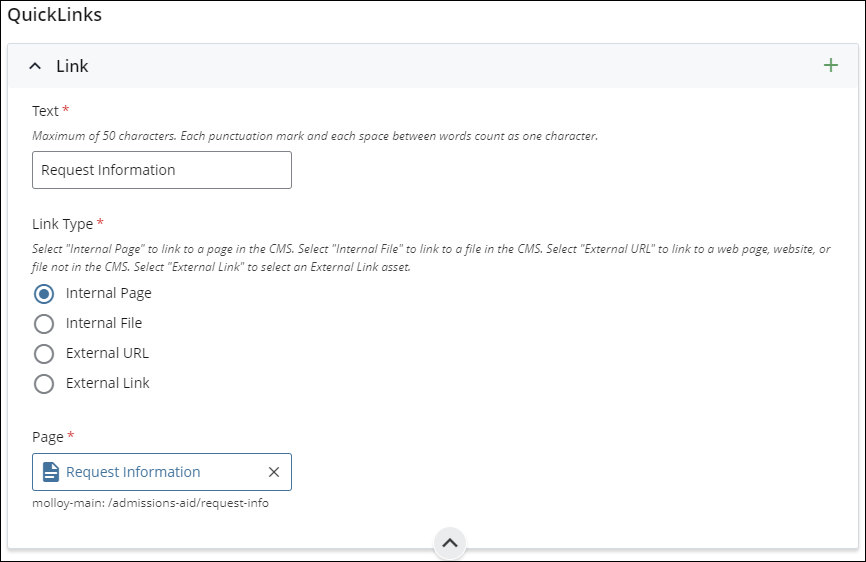
Use the "+" icon to add up to four more sets of Link fields.
![]()
After checking and confirming the accuracy of the links, submit the block to save it and add it to the site tree by clicking the "three dots" icon, entering a description of the content added into the comments field (optional), and then clicking the Submit button.
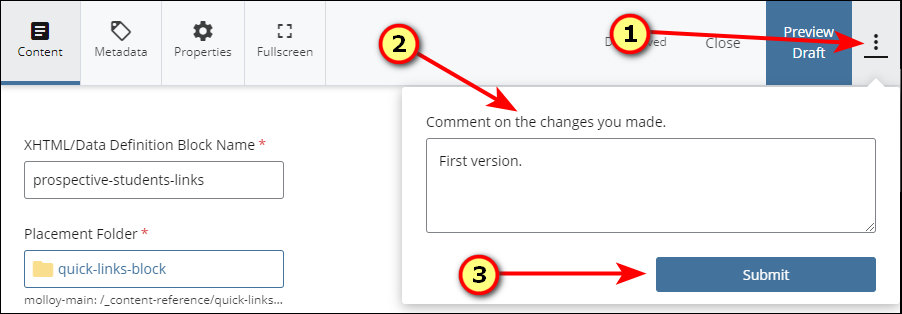
After submission, the new Quick Links block appears in the site tree in the _quick-link-blocks folder.

Adding a Quick Links block to a website page
Quick Links blocks are added to website pages that include a Quick Links page option.
To add a Quick Links block to a website page, enable the Quick Links page option by checking the Quick Links check box.
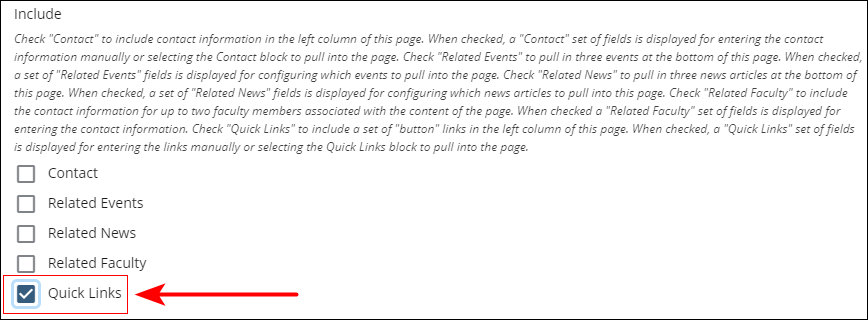
A Quick Links selector field displays. Select the Choose Block option.

A Quick Links Block Chooser field group displays. Use the chooser field to select a Quick Links block from the _quick-link-blocks folder to pull into the page.

The chooser field populates with the selected block.
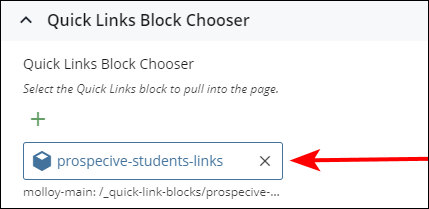
Use the "+" icon to add another chooser field to select a second Quick Links block if needed.

When the Quick Links block is pulled into a page, the content of the block is formatted by the page and is visible in Page Preview in the CMS. This enables you to check the content and to see how the information displays on the page.
On Program Detail and Standard Level page types, the Quick Links block displays in the left side rail (left column) of the page.
Program Detail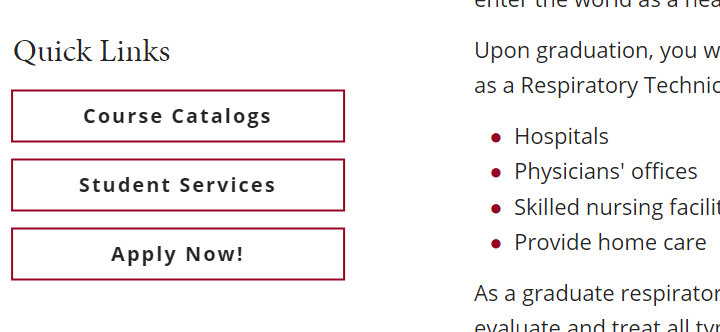
Standard Level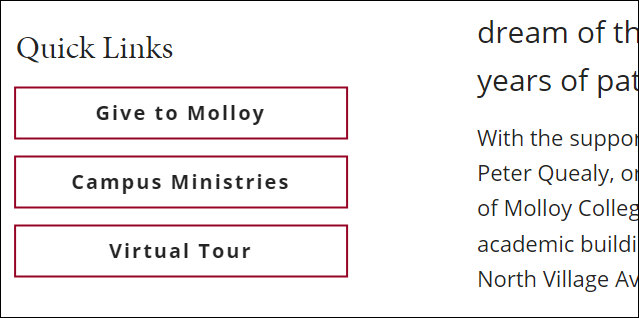
Updating existing Quick Links blocks
Quick Links blocks are opened and edited in the same way as website pages. Changes have to be submitted (in the same way as website pages) to be eligible to be published to the website.
Changing the ordering of the links in the Quick Links Block
To change the vertical ordering of the links within a Quick Links block, use the Up and Down arrows.
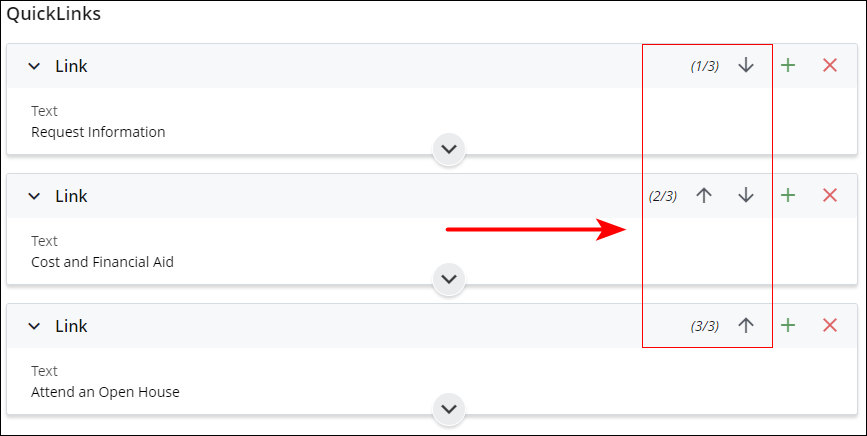
Deleting a link from a Quick Links block
To delete a link from a Quick Links block, click the "X" icon in the Link bar that holds the link you wish to delete.
IMPORTANT: The link is deleted immediately after the "X" icon is clicked. The CMS does not provide a confirmation step prior to deleting.
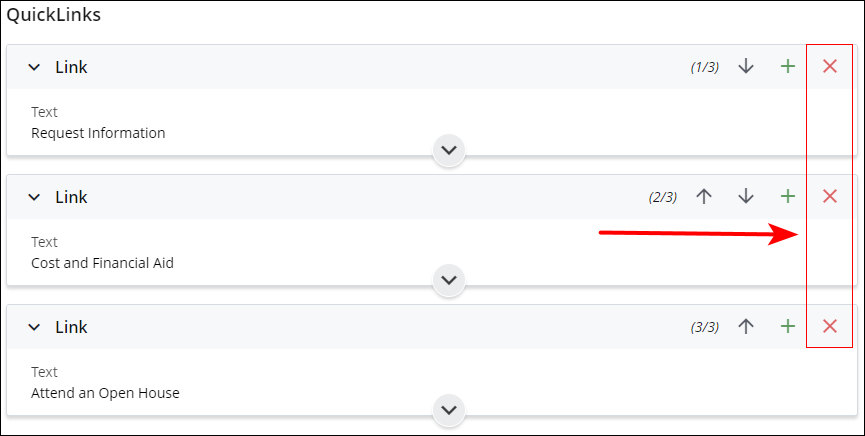
Publishing updates to existing Quick Links blocks
To publish updates to a Quick Links block to the website (changes to the link information, link ordering, adding links, and removing links), the pages into which the Quick Links block is pulled must be republished. This is necessary since blocks cannot be published directly.
To determine which pages are using the block and need to be republished, select the block in the site tree and then click the More link near the top-right of the screen and select the Relationships option.
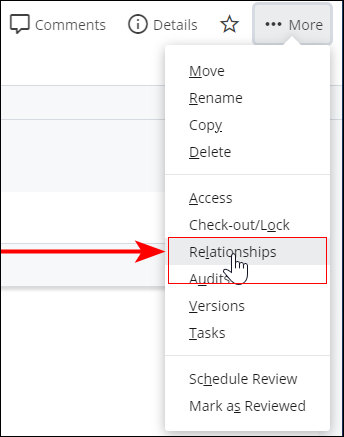
This opens a panel that displays a list of the pages that are using the Quick Links block.
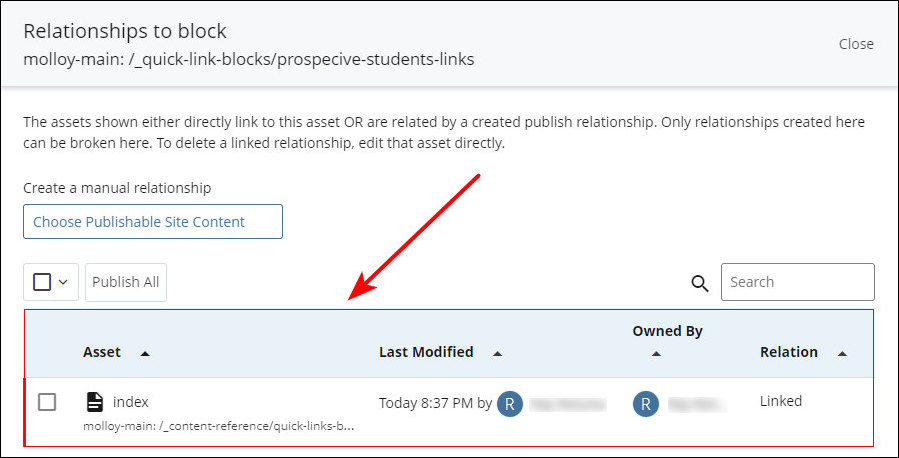
Click the Publish All button to publish all of the pages that use the Quick Links block. If the Quick Links block is heavily used, the list of pages that use the block may be broken out into several pages. In this case, you will need to click the Publish All button for each page of the list.
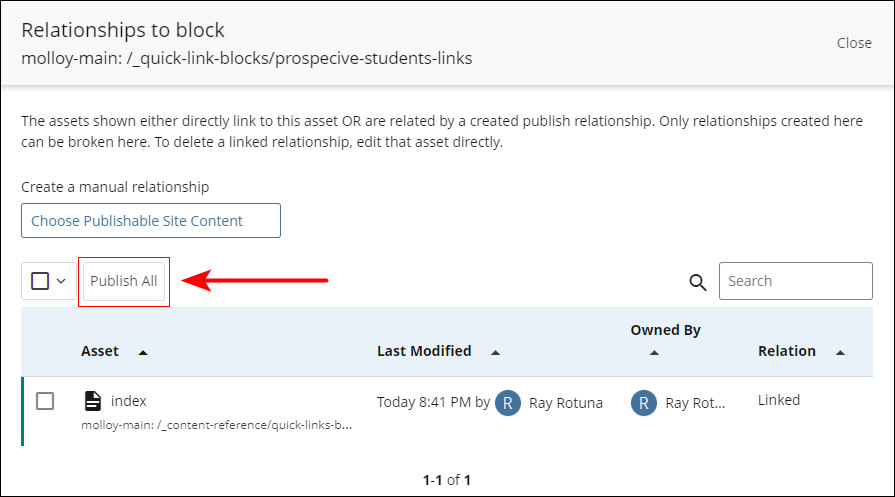
Deleting a Quick Links block
Quick Links blocks are deleted using the same procedure used when deleting folders, pages, and files. When deleting a Quick Links block, if the block is still used on any pages on the website, the CMS displays a warning message indicating how many pages are using the block.

Click the More Details link in the warning message to view a list of the pages using the Quick Links block.
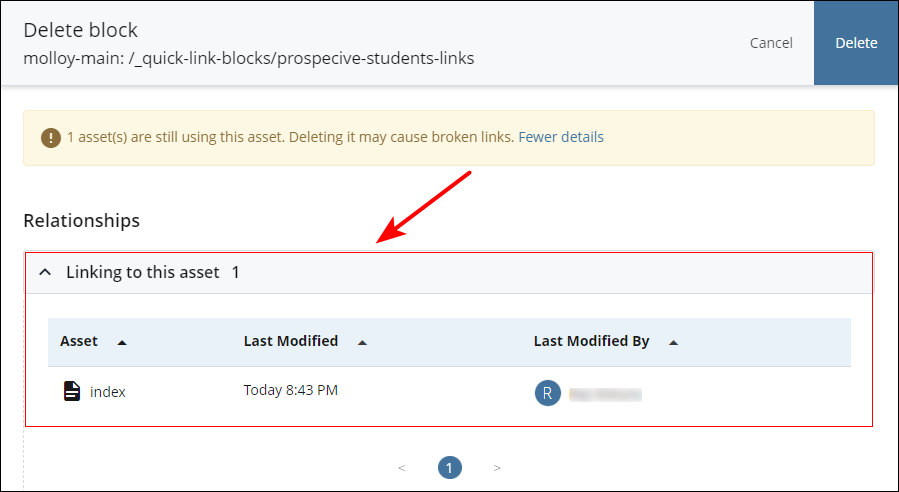
Record the locations of the pages, open them for editing and remove the block, then republish the page. After the Quick Links block has been removed from all pages, delete the block.
IMPORTANT: While the pages using the block will not error if the Quick Links block is deleted without being removed from them, not removing the block may cause gaps or presentation issues on the pages. Also, removing the block from the pages maintains orderly site content by keeping the website pages from having references to assets that no longer exist.
Quick Links Block Example
An example of the Quick Links block is in the left column of this page, below the navigation.